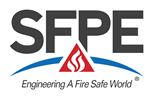FEMTC 2020
Evacuation Analysis of a Large Experimental Cavern of the CERN Accelerator Complex 
Giordana Gai - CERN, European Organization for Nuclear Research
Abstract
This contribution describes the evacuation analysis of a large underground facility of CERN, the European Organization for Nuclear Research. The facility is located at approximately 100 m below ground and is part of the CERN largest particle accelerator complex: the Large Hadron Collider (LHC). The experimental area is composed by a main cavern connected through corridors and passages to service caverns. Those are served by lifts foreseen in the evacuation procedure to reach the surface buildings. Given the complexity of the cavern from an evacuation standpoint, the use of agent-based modelling is employed. The evacuation model Pathfinder has been selected, and its capability to automatically integrate FDS toxicity data along the occupants’ paths and to calculate their Fractional Effective Dose (FED) has been used. The cavern also includes a particle detector, unique in its layout, for which the evacuation procedure foresees self-rescue masks to be collected at specific locations before moving towards the exit. Behavioural scenarios are carefully defined based on literature and evacuation drills. Repeated evacuation simulations are run with Pathfinder adopting pseudo-random sampling from distributions to vary the model inputs and evaluate behavioural uncertainty. Depending on their initial position in the cavern, the occupants - likely to be involved in maintenance activities - would need to evacuate using scaffolding, ascending and descending stepladders and stairs. The case study shows the importance of using advance modelling techniques to evaluate the consequences to life safety during fire evacuation in complex underground facilities.
Presentation
Resources
| Paper | Presentation | ||
|---|---|---|---|
| HTML | HTML | ||
| Resources Archive File (.zip) | |||

